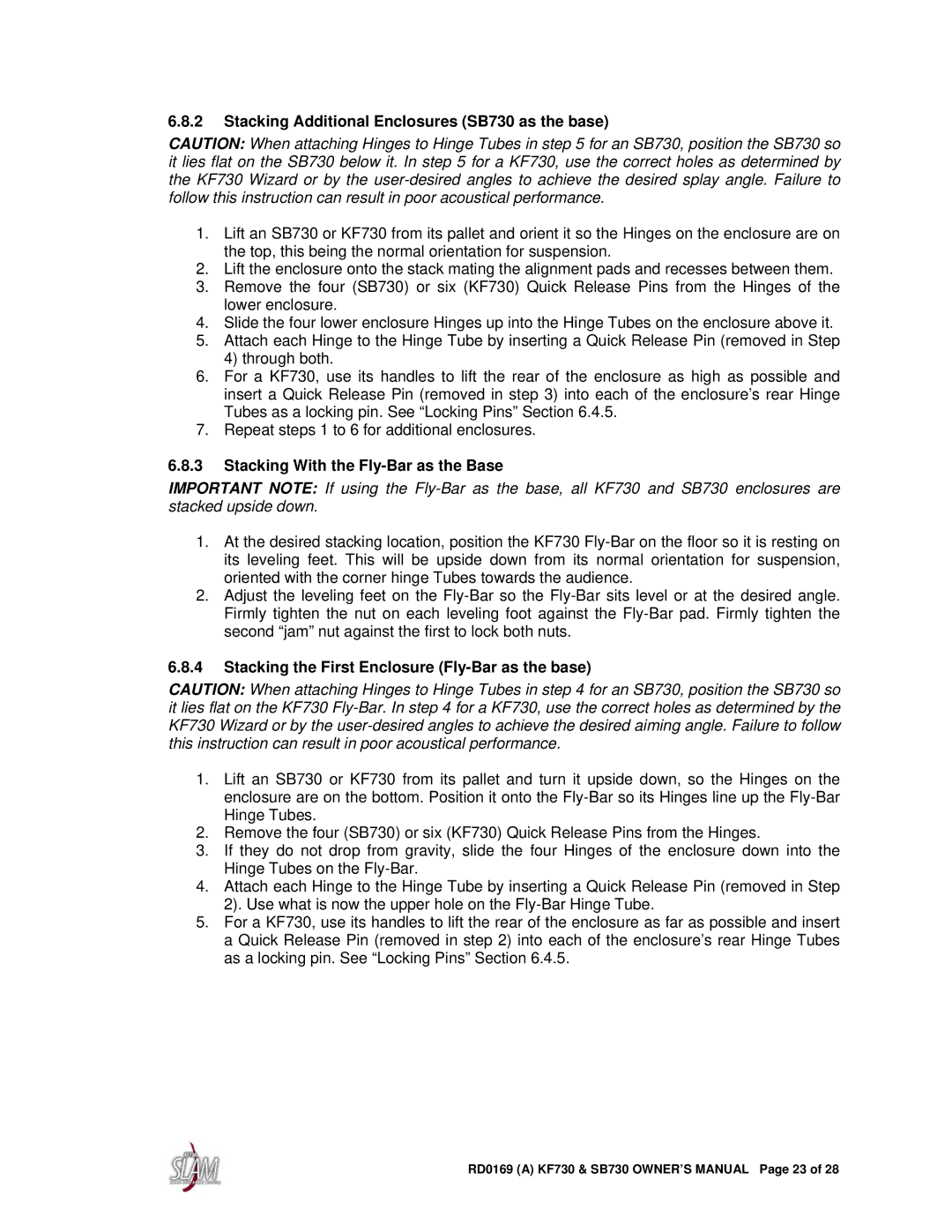
6.8.2Stacking Additional Enclosures (SB730 as the base)
CAUTION: When attaching Hinges to Hinge Tubes in step 5 for an SB730, position the SB730 so it lies flat on the SB730 below it. In step 5 for a KF730, use the correct holes as determined by the KF730 Wizard or by the
1.Lift an SB730 or KF730 from its pallet and orient it so the Hinges on the enclosure are on the top, this being the normal orientation for suspension.
2.Lift the enclosure onto the stack mating the alignment pads and recesses between them.
3.Remove the four (SB730) or six (KF730) Quick Release Pins from the Hinges of the lower enclosure.
4.Slide the four lower enclosure Hinges up into the Hinge Tubes on the enclosure above it.
5.Attach each Hinge to the Hinge Tube by inserting a Quick Release Pin (removed in Step 4) through both.
6.For a KF730, use its handles to lift the rear of the enclosure as high as possible and insert a Quick Release Pin (removed in step 3) into each of the enclosure’s rear Hinge Tubes as a locking pin. See “Locking Pins” Section 6.4.5.
7.Repeat steps 1 to 6 for additional enclosures.
6.8.3Stacking With the Fly-Bar as the Base
IMPORTANT NOTE: If using the
1.At the desired stacking location, position the KF730
2.Adjust the leveling feet on the
6.8.4Stacking the First Enclosure (Fly-Bar as the base)
CAUTION: When attaching Hinges to Hinge Tubes in step 4 for an SB730, position the SB730 so it lies flat on the KF730
1.Lift an SB730 or KF730 from its pallet and turn it upside down, so the Hinges on the enclosure are on the bottom. Position it onto the
2.Remove the four (SB730) or six (KF730) Quick Release Pins from the Hinges.
3.If they do not drop from gravity, slide the four Hinges of the enclosure down into the Hinge Tubes on the
4.Attach each Hinge to the Hinge Tube by inserting a Quick Release Pin (removed in Step 2). Use what is now the upper hole on the
5.For a KF730, use its handles to lift the rear of the enclosure as far as possible and insert a Quick Release Pin (removed in step 2) into each of the enclosure’s rear Hinge Tubes as a locking pin. See “Locking Pins” Section 6.4.5.
RD0169 (A) KF730 & SB730 OWNER’S MANUAL Page 23 of 28
